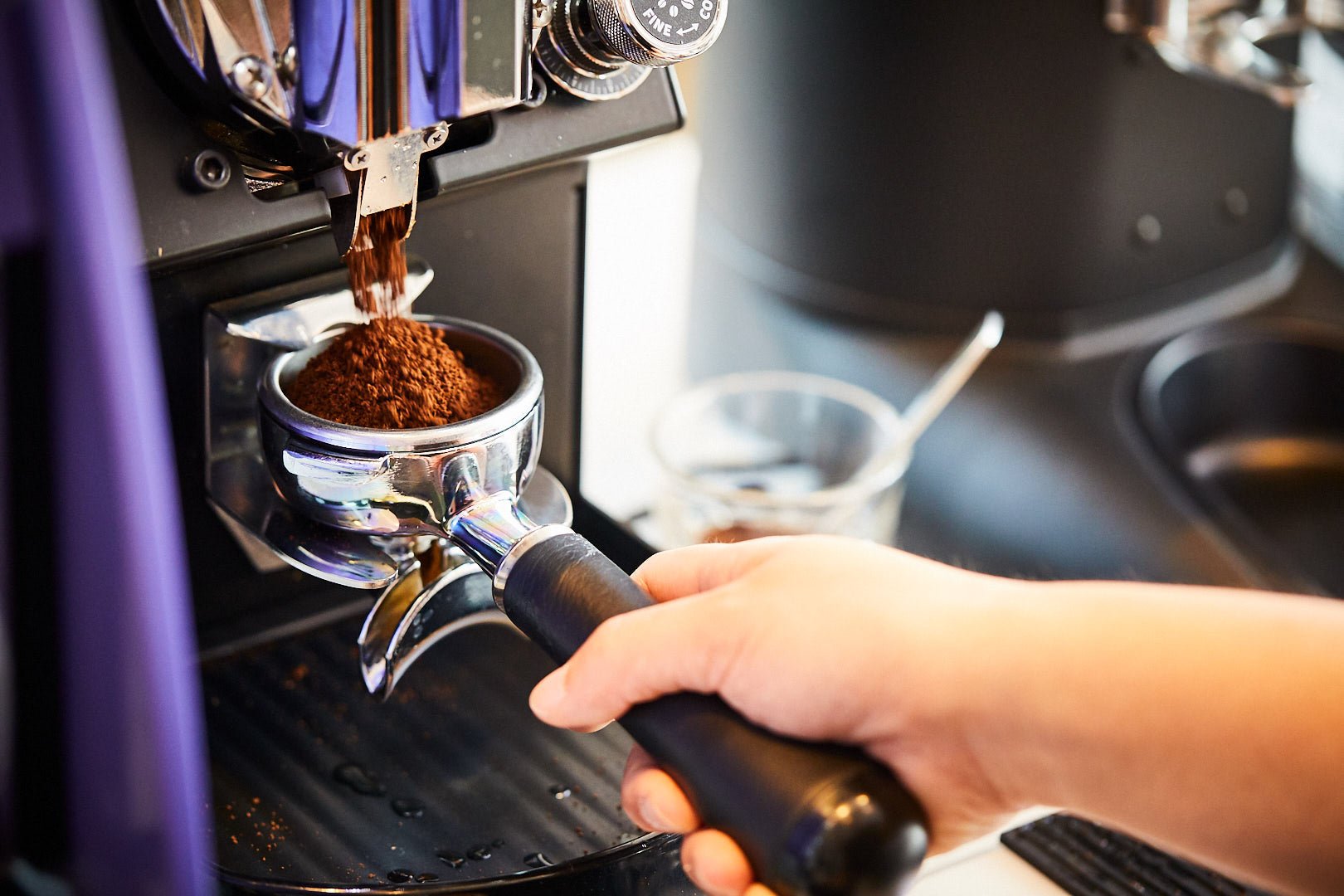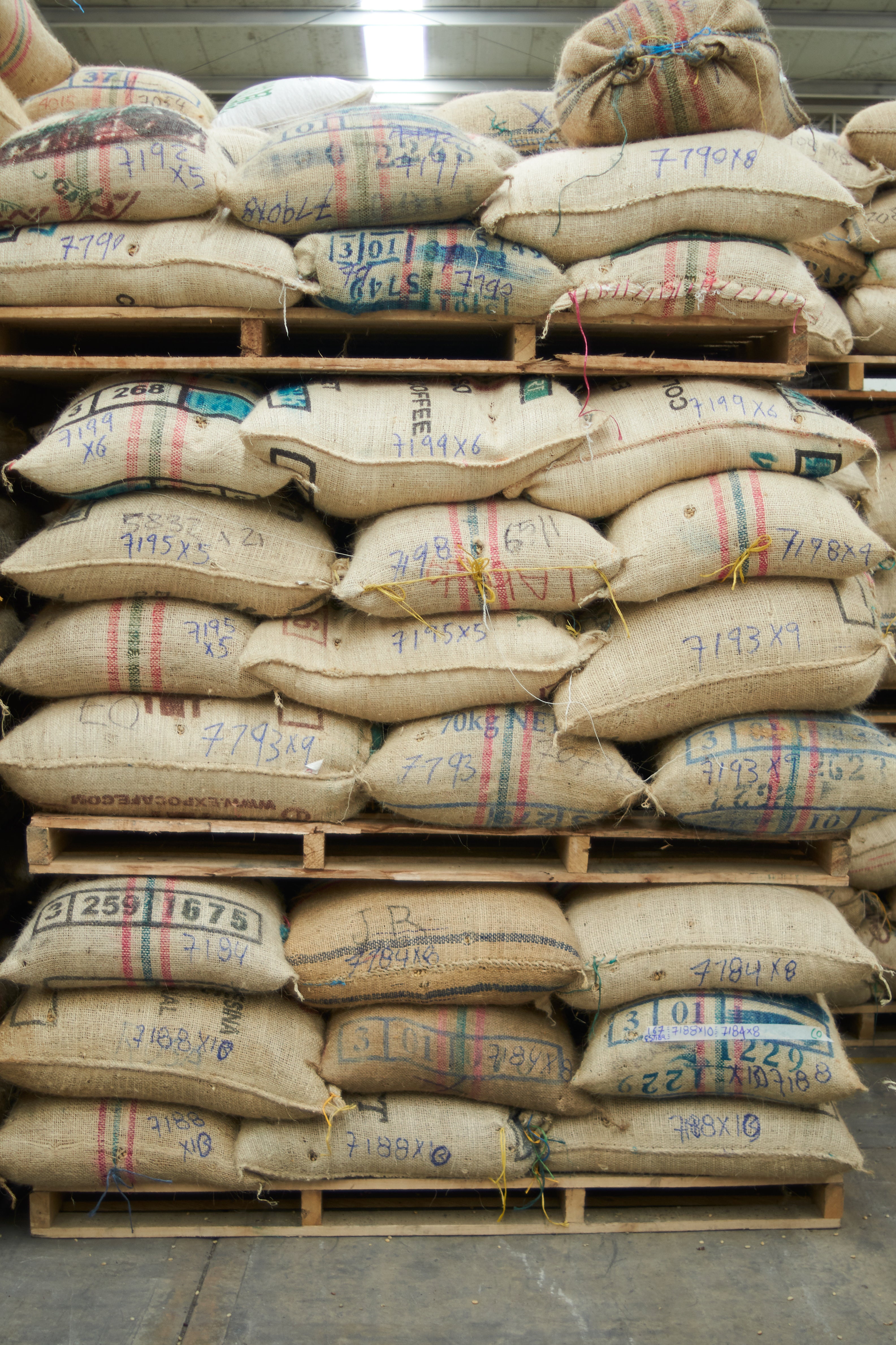Picture this: a car full of friends, a bangin’ playlist, the open road under a big West Texas sky. So many of my cherished memories come from the passenger seat of a vehicle in transit to someplace else.
In all the “seed-to-cup” articles I’ve seen, traveling is but a footnote in a coffee bean’s journey. It’s astonishing to me that such a critical step in the whole process goes by virtually unexplored. So we’re gonna change it up. Right. Now.
I’ve made a playlist of my favorite road trip tunes, so press play and put on that seatbelt ‘cuz we’re going to Colombia!
---------------------------------------------------------------------------------------------
There’s a beautiful Colombian coffee waiting in a warehouse in the jungle... It’s been harvested, processed, dried, and assessed for quality. Safe and sound in an airtight hermetic bag to prevent changes in flavor due to temperature and moisture, this incredible coffee may be held here for months before it’s contracted out.

The storage conditions are optimal, but things can still go wrong. Even when producers use the highest quality parchment for storage, changes in temperature, pests, or leaks can all cause issues. Agricultural theft is also a major problem in many coffee producing countries.
Soon samples are sent to importers and roasters. At Greater Goods we strive for relationship coffee, meaning we’re working with producers directly to create long-lasting partnerships. In this case, the roaster contacts the producer and works backwards through the chain, first finding the farmer and then the exporter and importer to facilitate the transaction. Literal direct trade is pretty rare, as producers and roasters typically don’t have the resources to transport their beans from place to place.
Once the coffee is contracted out, the fun really begins. The beans are transported by the truckload to a shipping container at the port. Depending on the origin, this can be a trek anywhere from 3 to 23 hours through sometimes challenging terrain.

Time at the port should be kept to a minimum, as temperature and moisture levels are high. We’re imagining Buenaventura but before we set sail, let’s imagine a worst-case scenario. Take this story for example, when local workers went on strike and demanded more funding for their city. Many coffee growing regions are also poverty-stricken; political and social unrest is not uncommon. Unfortunately, this can also lead to longer port times and increased looting.
When the coffee shipment boards the boat, its ownership is transferred from the exporter to the importer. Then begins a long journey by sea (cue the yacht rock), where all kinds of awful things can happen like this:

-----------------------------------------------------------------------------------------------
At long last, the coffee arrives at its next destination: another port! Here it’s unloaded into a consolidation warehouse, which we in the industry affectionately call “stripping the container”.
 Next it’s reloaded onto a pallet, wrapped up all nice and fancy, and packed onto another truck that’s headed straight for the roaster. Worst-case scenario? Your 92-point Colombian beans are packed next to a crate of fresh spices. Coffee can absorb odors, regardless of the high-grade parchment that holds it. We’re getting notes of black pepper and... curry?
Next it’s reloaded onto a pallet, wrapped up all nice and fancy, and packed onto another truck that’s headed straight for the roaster. Worst-case scenario? Your 92-point Colombian beans are packed next to a crate of fresh spices. Coffee can absorb odors, regardless of the high-grade parchment that holds it. We’re getting notes of black pepper and... curry?
Let’s assume those beautiful Colombian beans arrive at the roaster unscathed. The roaster first cups and approves a sample, and then receives the full shipment of green coffee. She roasts it to perfection, the production team packs, seals, and labels the bags, and our delivery driver Dee takes it straight to the cafes. Your favorite barista wakes up at 5 a.m., brews it, and asks you if you want a light or a dark roast today. Oof. Now that’s an incredible journey.
Specialty coffee is a real-life miracle. Wanna know more about why it's so special? Check out this article by our head roaster, Sara Gibson.



